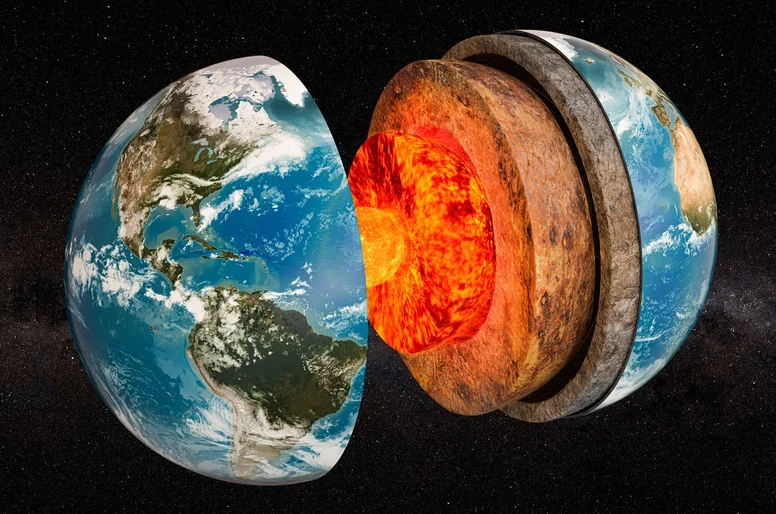The discovery of this immense subterranean ocean beneath the Earth’s crust underscores the intricate and dynamic nature of our planet’s geological processes.
In a flurry of astonishing scientific revelations captivating global attention, a recent buzz on social media has been ignited by the revelation of a massive ocean hidden beneath the Earth’s crust. This subterranean water reservoir, nestled approximately 700 kilometers below the Earth’s surface within a mineral called ringwoodite, boasts a volume three times larger than that of all the planet’s surface oceans combined.
The detailed findings of this groundbreaking discovery were unveiled in a 2014 scientific paper titled ‘Dehydration melting at the top of the lower mantle,’ shedding light on the unique properties of ringwoodite. Renowned geophysicist Steve Jacobsen, a key member of the discovery team, likened ringwoodite to a sponge, owing to its ability to absorb water facilitated by its distinctive crystal structure.
“I think we are finally seeing evidence for a whole-Earth water cycle, which may help explain the vast amount of liquid water on the surface of our habitable planet. Scientists have been looking for this missing deep water for decades,” remarked Jacobsen, reflecting on the significance of this revelation.
This groundbreaking discovery emerged from researchers’ meticulous study of earthquakes, during which they meticulously observed seismic shockwaves beneath the Earth’s surface using sophisticated seismometers.
Elaborating on their findings, the scientists elucidated, “The high water storage capacity of minerals in Earth’s mantle transition zone (at depths ranging from 410 to 660 kilometers) implies the possibility of a deep H2O reservoir, which could cause dehydration melting of vertically flowing mantle. We examined the effects of downwelling from the transition zone into the lower mantle with high-pressure laboratory experiments, numerical modeling, and seismic P-to-S conversions.”
Furthermore, their research unveiled intergranular melt in the transition zone, indicating hydration of a substantial portion of the transition zone and suggesting that dehydration melting might play a pivotal role in trapping water in this zone.
Armed with this groundbreaking revelation, researchers are now poised to gather additional seismic data globally to validate the prevalence of mantle melting. Their findings hold the potential to revolutionize our understanding of Earth’s water cycle, offering fresh insights into one of the planet’s fundamental processes.
The discovery of this immense subterranean ocean beneath the Earth’s crust underscores the intricate and dynamic nature of our planet’s geological processes. It opens new avenues for exploration and underscores the critical importance of continued scientific inquiry in unraveling the mysteries of the Earth’s deep interior.
As the scientific community delves deeper into the implications of this discovery, the revelation of this hidden ocean marks a significant milestone in our quest to comprehend the complexities of our planet’s inner workings and its interconnected systems. With each revelation, we move closer to unraveling the enigmatic secrets of our planet and the universe beyond.
